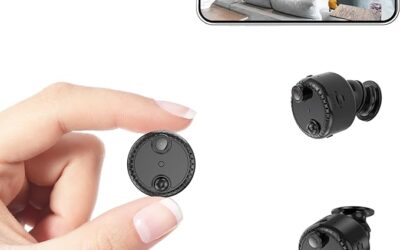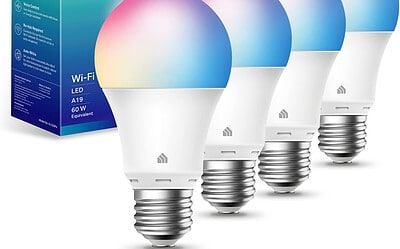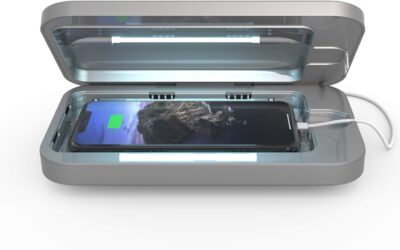Selecting the perfect smartphone can be a daunting task with the myriad of options flooding the market. To ease your decision-making process, we have taken the initiative to meticulously test and review nearly every prominent handset released in the past year. While you might already have a particular smartphone in mind, the current landscape presents an array of compelling choices, making the decision less straightforward than before. Many manufacturers are now offering exceptional phones at competitive prices, boasting feature sets that are strikingly similar.
If you’re set on purchasing an iPhone, the decision may be somewhat simplified. However, for Android users, the plethora of options introduces a multitude of considerations before reaching a conclusion. With our extensive experience in examining phones and testing numerous models over the years at ilovemygadgets, our top picks for 2024 remain consistent with those of the previous year: Apple’s iPhone 15 Pro and Google’s Pixel 8 phones continue to reign supreme.
Android or IOS?
Every operating system has advantages and disadvantages, which become evident while looking for the best smartphone. The close-knit ecosystem of Apple makes it incredibly simple to transfer music or phone conversations between devices and to share data amongst iPhones, iPads, and Macs. However, because services like Apple Messages are platform-exclusive, you’re essentially locked in.
There is a far greater selection of Android-powered smartphones available from businesses like Google, Samsung, Sony, and others. Android phones, on the other hand, frequently have lower trade-in values and don’t have the same amount of software support. Put simply, there isn’t a bad response. But you should think about how your phone will work with the other gadgets you own. Therefore, it definitely doesn’t make much sense to switch from an iPhone to an Android phone (or vice versa) unless you’re really tired of one OS and prepared to learn another – especially if everyone else in your home is using the same platform. Now let’s delve into our two best picks.
iPhone 15 Pro
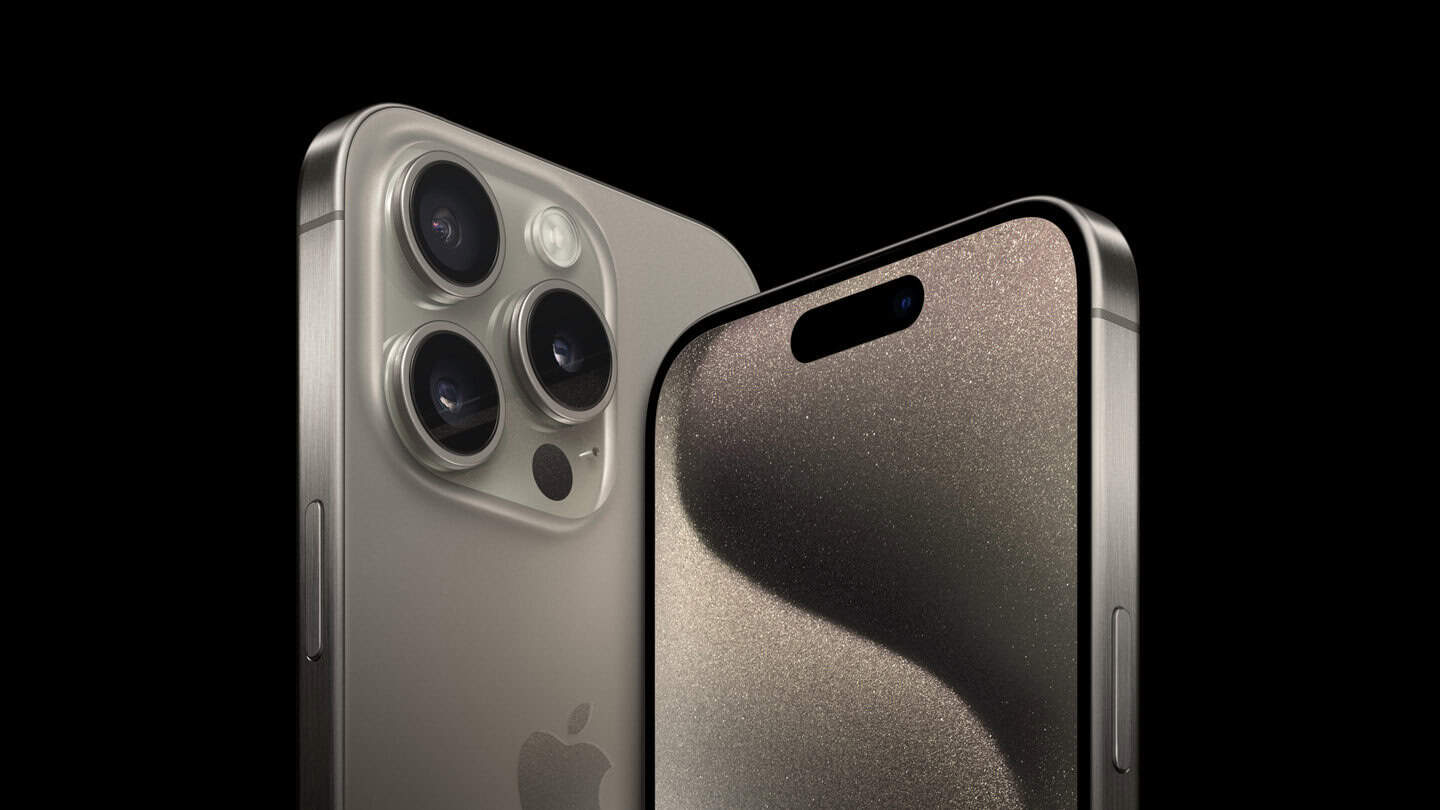
Design and Display
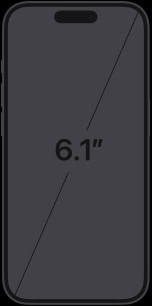
The iPhone 15 Pro heralds a groundbreaking milestone in Apple’s smartphone evolution by introducing an aerospace-grade titanium construction, a feat previously unseen in the iPhone lineup. Drawing inspiration from the alloys employed in spacecraft destined for interplanetary missions, this cutting-edge material underscores Apple’s commitment to pushing the boundaries of innovation. Renowned for its exceptional strength-to-weight ratio, titanium imbues the iPhone 15 Pro with a remarkable blend of robustness and lightweight agility, elevating it to the zenith of engineering excellence. As a result, these Pro models stand as a testament to Apple’s unwavering pursuit of perfection, offering users a device that seamlessly marries strength, sophistication, and technological prowess.
Screen Specs and Features
The iPhone 15 Pro boasts an impressive array of screen specifications and features, setting a new standard for visual excellence. At its helm is a 6.1-inch OLED display, maintaining consistency with its predecessor. With a pixel density of 460 pixels per inch (PPI), users are treated to crisp and detailed imagery, rendering content with unparalleled clarity. To ensure durability and protection, the display is fortified with ceramic shield glass, offering robust defense against everyday wear and tear. Moreover, the inclusion of a 120Hz refresh rate enhances the overall viewing experience, delivering smooth and fluid transitions while swiping and scrolling. This feature not only elevates visual fluidity but also contributes to energy efficiency, with the refresh rate dynamically adjusting to conserve power during idle periods, dialing down to as low as 1Hz.
Brightness levels remain impressive, with the display capable of reaching a maximum of around 850 nits under manual control, ensuring optimal visibility even in bright outdoor conditions. Furthermore, in auto mode, the display can boost up to nearly 1800 nits, guaranteeing enhanced visibility in varying lighting environments. The iPhone 15 Pro continues to excel in color accuracy and contrast, delivering vibrant and true-to-life hues across the spectrum. Support for HDR 10 and Dolby Vision further enhances the dynamic range, allowing users to experience content with heightened clarity and detail.
The display features a distinctive pill-shaped notch cutout housing the selfie camera and the advanced 3D Time-of-Flight (ToF) camera. Leveraging the capabilities of the ToF camera, Apple’s Face Unlock remains highly secure and reliable, providing users with seamless and effortless authentication. It also introduces support for Dynamic Island functionality, allowing users to extend the pill-shaped black bars to display relevant information and quickly access supported apps from the background.
Stereo Speakers Test
The iPhone 15 Pro continues Apple’s tradition of delivering immersive audio experiences with its stereo speakers. Equipped with dual speakers, strategically positioned at the top and bottom of the device, the iPhone 15 Pro offers rich and dynamic sound quality that enhances multimedia consumption, gaming, and hands-free calling. These stereo speakers are meticulously engineered to deliver balanced audio output, ensuring clear vocals, crisp highs, and deep bass reproduction. Whether you’re watching your favorite movies, streaming music, or engaging in video calls, the iPhone 15 Pro’s stereo speakers elevate the auditory experience, enveloping you in a world of sound.
The speakers are intelligently tuned to optimize sound performance based on the content being played and the device’s orientation. Adaptive audio processing adjusts the sound profile dynamically, delivering consistent audio quality whether you’re holding the device in portrait or landscape mode. They are designed with spatial audio capabilities, further enhancing the immersive experience. With spatial audio, sound is mapped in three-dimensional space, creating a sense of depth and directionality that mimics a surround sound system.
The stereo speakers support Apple’s Dolby Atmos technology, allowing for an even more immersive audio experience when watching compatible content. Dolby Atmos-enabled content provides lifelike soundscapes with multidimensional audio that surrounds you from every angle, delivering a cinematic experience right from your iPhone 15 Pro.
Storage Options
The iPhone 15 Pro has 4 memory storage sizes: 128GB, 256GB, 512GB, and 1TB.
iOS 17 and UI
The iPhone 15 Pro comes equipped with Apple’s latest iOS 17 operating system, offering users a familiar yet refined user experience with a host of new features and enhancements. While retaining the essence of previous iterations, iOS 17 introduces several noteworthy additions aimed at enhancing functionality and convenience. One of the standout features of iOS 17 is the optional standby mode and always-on display in landscape orientation. This feature allows users to glance at essential information while the device is charging, providing convenient access to notifications, time, and other relevant data without needing to unlock the device. Interactive widgets are another welcome addition to the iOS ecosystem, empowering users to manipulate widgets directly from the home screen. This streamlined approach eliminates the need to navigate into individual apps, offering a more efficient and intuitive user experience.
iOS 17 introduces contact posters, enabling users to personalize their contacts with photos, emojis, and text, adding a touch of personality to their address book. It also incorporates several other new features designed to enhance productivity and usability. Offline maps provide users with access to navigation assistance even in areas with limited or no internet connectivity, ensuring seamless navigation on the go. Password sharing with friends simplifies the process of securely sharing passwords for various accounts and services, streamlining collaboration and communication.
Lastly, it introduces live voicemail, allowing users to receive and interact with voicemail messages in real-time, enhancing the overall voicemail experience with more dynamic and interactive features.

Type-C Port Functionality
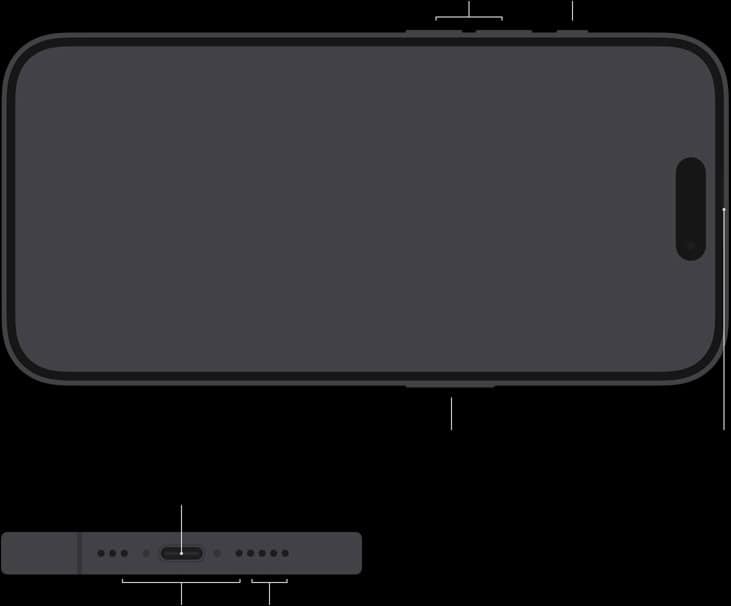
The introduction of USB Type-C connectivity on the iPhone 15 Pro brings forth a plethora of functionalities, enhancing the device’s versatility and expanding its capabilities. One notable feature is the Type-C Alt Mode, which enables users to mirror the phone’s screen onto an external monitor. This functionality allows for seamless presentations, gaming experiences, and media consumption on larger displays. Moreover, users can output video in stunning 4K resolution at 60 frames per second, delivering crisp and immersive visuals for an enhanced viewing experience.
With the appropriate adapter, users can leverage Type-C Alt Mode to connect their iPhone 15 Pro to external monitors, projectors, or TVs. While certain content may display with letterboxing or black bars, some specific apps, such as Netflix, offer support for full-screen output, maximizing the utilization of available screen real estate. The iPhone 15 Pro’s Type-C port supports USB-C host mode, enabling users to connect peripherals like mice or keyboards directly to the device. This functionality enhances productivity and usability, allowing for a more seamless computing experience when using the iPhone 15 Pro for work or leisure.
Apple A17 Pro performance || Thermal throttling || Battery endurance and charging test
The performance of the iPhone 15 Pro is driven by the cutting-edge Apple A17 Pro chipset, which delivers exceptional speed, efficiency, and capabilities. Similar to its counterpart, the iPhone 15 Pro Max, this device harnesses the power of the A17 Pro chipset, marking a significant leap forward in processing prowess. One notable observation is the iPhone 15 Pro’s ability to match the performance of the Pro Max—a departure from previous generations. This achievement underscores the A17 Pro’s remarkable capabilities, with both devices exhibiting comparable CPU and GPU performance, showcasing improvements of around 10% compared to the previous iteration.
A standout feature of the A17 Pro chipset is its GPU, which introduces hardware-accelerated ray tracing—an innovation that significantly enhances ray tracing speed. This advancement elevates the device’s graphical capabilities, delivering immersive gaming experiences and stunning visual effects with unprecedented speed and realism. Moreover, the sustained performance of the iPhone 15 Pro during prolonged stress tests is commendable, surpassing that of the Pro Max. With the ability to sustain 85% of its maximum CPU performance, the iPhone 15 Pro demonstrates remarkable thermal management and efficiency, ensuring consistent performance even under demanding conditions.
However, it’s worth noting that the battery endurance of the iPhone 15 Pro, with its battery capacity of less than 3,300 milliampere-hours, falls short of the Pro Max’s longevity. Despite this, the device still offers respectable battery life, albeit with an endurance rating similar to that of its predecessor, the iPhone 14 Pro.
In terms of charging capabilities, the iPhone 15 Pro supports fast charging with Apple’s official 20-watt adapter, allowing for rapid replenishment of battery levels. Charging from 0 to 57% in just half an hour, and reaching a full charge in a little over an hour and a half, users can enjoy the convenience of fast charging to keep their device powered throughout the day. Users have the option of wireless charging, providing added convenience and flexibility for powering up their iPhone 15 Pro without the need for cables.
Camera Specs || Main camera: photo and video quality
the camera specifications of the iPhone 15 Pro, offering a comprehensive overview of its imaging capabilities. While it may not boast the same excitement as the Pro Max’s camera setup due to the absence of the new telephoto cam, the iPhone 15 Pro still impresses with its versatile array of lenses and advanced features.
At the forefront is the 48-megapixel main camera, accompanied by a 12-megapixel 3x telephoto lens, a 12-megapixel ultra-wide camera, and a 3D Time-of-Flight (ToF) LiDAR scanner. Notably, the main camera captures default photos at 24 megapixels, a departure from the standard 12-megapixel output seen in most smartphone cameras. This higher resolution results in images with enhanced detail, especially noticeable in stationary subjects, making the default resolution worth utilizing.
One distinguishing aspect of the iPhone 15 Pro’s camera output is its true-to-life color rendition, characterized by conservative tones compared to the saturated colors often seen in other manufacturer’s devices. This approach results in images with a more natural and realistic appearance, albeit potentially perceived as less vibrant by some users.
The main camera also offers the flexibility to shoot at different focal lengths, including 28mm and 35mm equivalents, providing users with versatile framing options without compromising image quality. Additionally, the 48-megapixel sensor, coupled with Apple’s advanced processing, enables a two-time zoom mode with impressive results, all while maintaining a consistent 12-megapixel output.
Portrait mode, captured at the two-time zoom level by default, delivers excellent subject separation and background blur, though there’s room for improvement in terms of detail. In low-light conditions, the iPhone 15 Pro employs an automatic night mode to enhance image quality, resulting in brighter exposures and improved shadow development compared to standard shots.
When it comes to video recording, the main camera excels, capturing stunning 4K clips with plenty of detail and natural-looking processing. Apple’s cinematic stabilization further enhances video quality, ensuring smooth and steady footage even in challenging conditions.
3X zoom camera: photo and video quality || Ultrawide camera: photo and video quality || Selfies
The 3x zoom camera on the iPhone 15 Pro, providing insights into both photo and video quality. While it may lack the novelty of the Pro Max’s camera setup, the 3x telephoto lens on the iPhone 15 Pro delivers impressive results with its sharpness, detail, and natural-looking processing. Unlike the Pro Max, which relies on digital cropping for zoom capabilities beyond 3x, the iPhone 15 Pro’s 3x telephoto camera offers optical zoom without resorting to digital enhancements. This ensures images retain their sharpness and clarity, with accurate colors and ample dynamic range.
In low-light conditions, the iPhone 15 Pro’s telephoto camera performs admirably, capturing detailed images with good dynamic range and accurate colors. Even without the auto night mode, images remain well-exposed with minimal noise, maintaining image quality in challenging lighting environments.
The 4K videos recorded with the telephoto camera exhibit impressive sharpness and color accuracy, with wide dynamic range ensuring vibrant and lifelike footage. While the main camera may offer slightly better sharpness, the telephoto camera’s video quality remains excellent, providing users with versatile shooting options.
Moving on to the ultrawide camera, its photos are characterized by sharpness and detail, extending to the corners of the frame. While high-frequency details like foliage may appear slightly over-processed, colors remain consistent and true-to-life.
The ultrawide camera’s autofocus capability enables it to capture close-up subjects effectively, delivering excellent macro shots with detailed, sharp, and colorful rendering. In low-light conditions, the ultrawide camera performs adequately, with night mode enhancing image quality and exposure in brighter scenes.
When recording 4K videos, the ultrawide camera maintains consistent sharpness across the frame, delivering immersive footage with good detail and color rendition.
Selfies captured with the 12-megapixel front-facing camera are exceptional, featuring great skin tones, color rendition, and wide dynamic range. However, fine facial details may appear pronounced, potentially affecting the overall result.
Google’s Pixel 8

Display Quality Test || Speaker Quality Test
The Google Pixel 8 emerges as a compact flagship, offering users a pure Android experience complemented by a plethora of AI-based software features. With an elevated launch price compared to its predecessor, the Pixel 7, the Pixel 8 justifies its value with a host of upgrades, including Google’s new Tensor G3 chipset, a brighter, higher refresh rate display, enhancements in the camera department, and a larger battery capacity.
At first glance, the Pixel 8 showcases a refined design, with a smaller display and reduced bezels contributing to a more compact form factor. The aluminum side frame boasts a soft matte finish, while the back, crafted from Gorilla Glass Victus, retains the iconic horizontal visor-shaped camera housing and glossy finish, exuding familiarity and sophistication. Furthermore, the device is IP68 certified, offering protection against dust and water ingress.
The Pixel 8’s display is a standout feature, sporting a 6.2-inch OLED panel with a 1080p resolution, a 120Hz refresh rate, and Gorilla Glass Victus protection. The upgrade to a 120Hz refresh rate enhances the fluidity of interactions, ensuring smooth swiping and scrolling, while the display’s impressive brightness, exceeding 1,000 nits in manual mode and over 1,400 nits in auto mode, enhances visibility in bright outdoor conditions. With sharp visuals, excellent contrast, and accurate colors, the Pixel 8’s display delivers an immersive viewing experience, complemented by support for HDR10+ video playback.
Audio performance is equally impressive, thanks to the device’s stereo speaker setup, offering robust loudness and clear sound quality, enriched with ample bass and vocals. Additionally, the Pixel 8 incorporates an under-display optical fingerprint reader, providing reliable biometric authentication for secure access.
Storage Options
In terms of storage options, users can choose from configurations of 128GB or 256GB onboard storage, with no option for expandable storage via microSD. Despite this limitation, the Pixel 8 offers ample storage capacity to accommodate users’ needs for apps, media, and files.
Overall, the Google Pixel 8 combines premium design, powerful performance, and intuitive software features to deliver a compelling flagship smartphone experience. With its refined aesthetics, vibrant display, immersive audio, and reliable biometric security, the Pixel 8 stands out as a worthy contender in the competitive smartphone market.
Android 14 || A.I functions || Tensor G3
Google Pixel devices offer users the pure Android experience, delivering the operating system exactly as Google intended. The Pixel 8, in particular, stands out by shipping with the latest Android version right out of the box, giving users access to Android 14 before any other device. While Android 14 maintains a similar visual aesthetic to its predecessor, it introduces several noteworthy features.
One notable enhancement is the increased customization options available on the lock screen, allowing users to personalize their device further. Additionally, users can create their own wallpapers using various styles and color combinations. Android 14 also introduces improved privacy features, such as restricting app access to the entire gallery when sending images.
Moreover, the new Android version supports lossless audio with wired headphones and 10-bit HDR images, enhancing the multimedia experience. Pixel-specific AI-based features receive upgrades as well. Live Translate operates faster, and Interpreter Mode can now translate conversations in real-time for supported languages. Call Screening, which allows the Google Assistant to manage calls or transcribe voicemails, also sees improvements.
The Pixel 8 benefits from Google’s Tensor G3 chipset, built on a 4-nanometer process. This chipset integrates a new GPU for enhanced graphics performance and Google’s Titan M2 chip for AI-related tasks. While the Pixel 8 demonstrates improved CPU and GPU performance compared to its predecessor, it falls behind current flagship competitors powered by the Snapdragon 8 Gen 2 chipset. Google emphasizes optimization over raw performance, ensuring smooth day-to-day operations but may not satisfy heavy gamers.
Thermal management is a concern, as prolonged stress tests reveal significant thermal throttling on the Pixel 8, leading to performance dips under sustained loads. Despite this, Google promises extended support with OS and security updates for seven years, surpassing other smartphones on the market.
The Google Pixel 8 offers the quintessential Android experience, bolstered by Android 14’s new features and powered by the Tensor G3 chipset. While it may not match the performance of some flagship competitors, its optimized software and long-term support make it a compelling choice for users seeking a pure Android experience.
Battery life & Charging speed || Camera Specs || Ultrawide Photo and Video Quality || Selfies
Despite its larger battery capacity, the Pixel 8 hasn’t seen improvements in battery life compared to its predecessor. It earns an overall endurance rating of 83 hours, which is slightly less than before. However, the screen-on time results remain similar to last year’s model.
Charging speed has been upgraded from 20W to 27W, resulting in slightly faster charging times. However, it’s still not particularly impressive, with the Pixel 8 able to charge from 0 to 56% in half an hour. Wireless charging is also supported.
Moving on to the camera specifications, the Pixel 8 features a 50MP main camera and a 12MP ultra-wide camera on the back. The main camera produces photos with plenty of detail, vibrant colors, and good dynamic range. It performs well in both daylight and low-light conditions, with the night mode producing balanced exposures and good detail. Video quality from the main camera is also impressive, with great detail and dynamic range.
The ultrawide camera maintains similar tonal properties to the main camera in daylight photos, with good detail. However, low-light photos from the ultrawide camera may appear softer. Video quality from the ultrawide camera is decent but could have better detail.
Selfies come from a 10.5MP front-facing camera, which captures images with good detail, although zoomed selfies may appear slightly softer.
In conclusion, the Pixel 8 offers a premium compact build, a bright 120Hz display, and excellent camera performance. However, its battery life and charging speed may not be as impressive as some competitors, and its chipset performance falls behind. Nevertheless, considering its unique software experience and seven years of support, the Pixel 8 remains a significant upgrade and a competitive option for consumers seeking a vanilla Android experience or a compact flagship device

